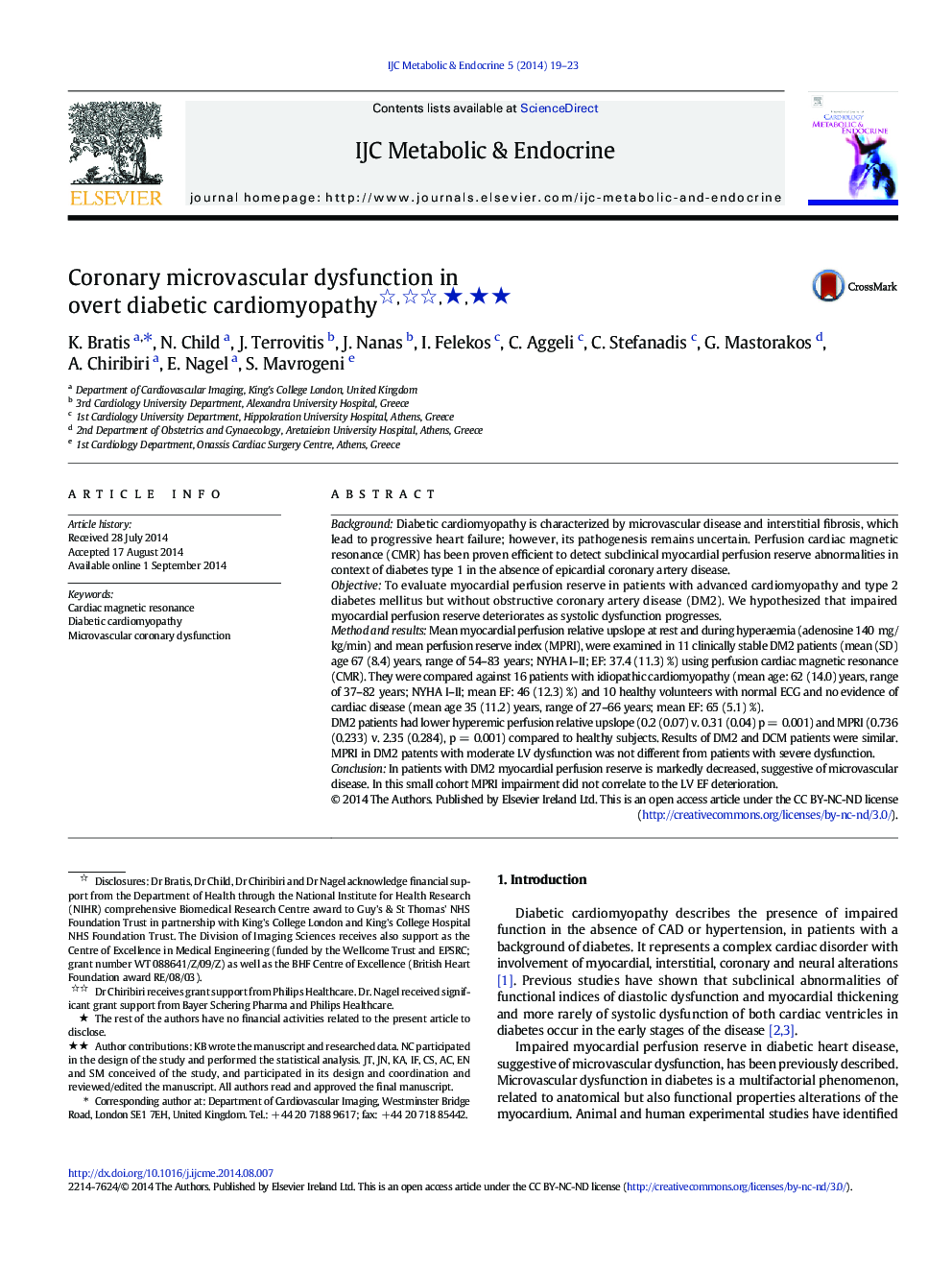| Article ID | Journal | Published Year | Pages | File Type |
|---|---|---|---|---|
| 2927262 | IJC Metabolic & Endocrine | 2014 | 5 Pages |
BackgroundDiabetic cardiomyopathy is characterized by microvascular disease and interstitial fibrosis, which lead to progressive heart failure; however, its pathogenesis remains uncertain. Perfusion cardiac magnetic resonance (CMR) has been proven efficient to detect subclinical myocardial perfusion reserve abnormalities in context of diabetes type 1 in the absence of epicardial coronary artery disease.ObjectiveTo evaluate myocardial perfusion reserve in patients with advanced cardiomyopathy and type 2 diabetes mellitus but without obstructive coronary artery disease (DM2). We hypothesized that impaired myocardial perfusion reserve deteriorates as systolic dysfunction progresses.Method and resultsMean myocardial perfusion relative upslope at rest and during hyperaemia (adenosine 140 mg/kg/min) and mean perfusion reserve index (MPRI), were examined in 11 clinically stable DM2 patients (mean (SD) age 67 (8.4) years, range of 54–83 years; NYHA I–II; EF: 37.4 (11.3) %) using perfusion cardiac magnetic resonance (CMR). They were compared against 16 patients with idiopathic cardiomyopathy (mean age: 62 (14.0) years, range of 37–82 years; NYHA I–II; mean EF: 46 (12.3) %) and 10 healthy volunteers with normal ECG and no evidence of cardiac disease (mean age 35 (11.2) years, range of 27–66 years; mean EF: 65 (5.1) %).DM2 patients had lower hyperemic perfusion relative upslope (0.2 (0.07) v. 0.31 (0.04) p = 0.001) and MPRI (0.736 (0.233) v. 2.35 (0.284), p = 0.001) compared to healthy subjects. Results of DM2 and DCM patients were similar. MPRI in DM2 patents with moderate LV dysfunction was not different from patients with severe dysfunction.ConclusionIn patients with DM2 myocardial perfusion reserve is markedly decreased, suggestive of microvascular disease. In this small cohort MPRI impairment did not correlate to the LV EF deterioration.
